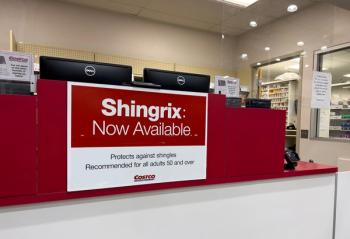With summer here—and more time being spent outdoors—many individuals are concerned about sunburn, allergies, and first aid. However, one of the most significant and often-overlooked dangers is Lyme disease, which is the most commonly transmitted tick-borne infection in the United States.1 Because small ticks can be a significant threat, it is essential to be familiar with both preventative measures and symptoms.
Because our understanding of Lyme disease has advanced, we now know that the illness is caused by a spirochete bacteria known as Borrelia burgdorferi.2 This bacterium is transmitted via the bite of infected black-legged ticks, also known as deer ticks.1,3 Ticks are most commonly found in wooded areas but can also be found in lawns and shrubs.
Community pharmacists play a key role in helping patients identify signs of potential exposure, allowing for timely intervention and treatment.
SIGNS AND SYMPTOMS
The most common sign of Lyme disease is a bull’s-eye rash called erythema migrans, which is found in 70% to 80% of cases. The rash usually appears at the site of the tick bite approximately 1 to 2 weeks after the initial bite and can expand gradually over a few days, reaching up to 12 inches. The rash may feel warm to the touch and is normally not itchy or painful.1
Other early signs and symptoms seen between 3 and 30 days after a tick bite may include fever, chills, headache, fatigue, muscle/joint aches, and swollen lymph nodes. Later signs and symptoms, occurring days to months after a tick bite, may include severe headaches and neck stiffness, multiple bull’s-eye rashes on the body, facial palsy, arthritis with severe joint pain, and intermittent pain in tendons, muscles, joints, and bones. Lyme disease can have long-term effects affecting multiple vital organs, including the brain and nervous system, muscles and joints, heart and circulation, and digestion. Untreated Lyme disease can produce a wide range of severe symptoms including high fevers, facial paralysis, irregular heartbeat, and refractory arthritis.1
About the Authors
Sofiya Volynsky, PharmD, is a manager of clinical education and program implementation at Rite Aid, where she supports 7 field leaders and 215 pharmacies.
Atosa Nazemi, PharmD, is a manager of clinical education and program implementation at Rite Aid, where she provides education and support to field leaders and more than 1750 store locations.
Melissa Russo, PharmD, is director of clinical education and program implementation at Rite Aid, where she provides education and support to field leaders and more than 1750 store locations.
Bruce Roberts, PharmD, is a manager of clinical education and program implementation at Rite Aid, where he champions clinical services and strives to grow the profession.
Mandy Hoysan, PharmD, is a manager of clinical education and program implementation at Rite Aid, where she provides education and support to both front-end and pharmacy field leaders.
TREATMENT FOR LYME DISEASE
Treatment and duration may vary depending on the stage of Lyme disease, making it crucial for pharmacists to provide guidance to patients about the regimen selected. An analysis of the signs, symptoms, and blood tests will help determine the stage and treatment regimen accordingly. Stage 1 is called early localized Lyme disease, and in this stage, the bacteria have not yet spread throughout the body. Stage 2 is called early disseminated Lyme disease, which means the bacteria have now begun to spread throughout the body. Stage 3 is called late disseminated Lyme disease, meaning the bacteria have spread to distant sites such as the joints and nerves.1
A 10- to 14-day course of antibiotics is used to treat individuals diagnosed with early Lyme disease, and the duration of treatment depends on the medication selected. Common choices of antibiotics include doxycycline, amoxicillin, cefuroxime, and azithromycin. Later stages of Lyme disease are often treated with the same oral antibiotics for a longer period, usually up to 30 days. Intravenous ceftriaxone is sometimes utilized for refractory arthritis or neurologic disease caused by Lyme disease.4,5
In all scenarios, treatment should be initiated quickly and early for the best prognosis.
PREVENTION IS KEY
When it comes to ticks and Lyme disease, prevention is always the most effective strategy. Pharmacists should advise any patient engaging in outdoor activities, such as hiking, hunting, or walking, that preventing Lyme disease involves a combination of personal precautions and environmental management to minimize exposure to tick bites.
Patients spending time in wooded or grassy areas should wear long sleeves and long pants and tuck pants into socks to create a physical barrier against ticks.6,7 Remind patients who may be involved in outdoor activities to use insect repellents containing N,N-diethyl-m-toluamide (commonly called DEET) on the skin and permethrin on clothing for added protection.8
After outdoor activities, patients should conduct thorough body checks for ticks, paying close attention to hidden areas like the scalp, armpits, and groin.8 Also remind patients to closely examine their pets for ticks and tick-borne diseases.9 Using professional pest control measures to further decrease tick populations in residential areas is also helpful.8
TICK REMOVAL, DISPOSAL
With their knowledge base, pharmacists should be able to educate patients on what to do if a tick is found embedded in the skin.
First, the patient should promptly remove the tick with fine-tipped tweezers, grasping as close to the skin as possible to ensure complete removal. It is recommended to apply steady upward pressure when removing a tick and to avoid twisting, which can cause the mouth parts to break off and remain in the skin. If this occurs, the patient or caregiver should use tweezers to remove the mouth parts; if they are unable to remove the mouth parts easily with tweezers, counsel patients to leave the mouth parts untouched and allow the skin to heal.10
After tick extraction, thoroughly clean the bite with rubbing alcohol or soap and water. Some ways to dispose of a live tick are by immersing it in alcohol, sealing it in a bag, wrapping it tightly with tape, or flushing it down the toilet.10
CONCLUSION
Public awareness and education on recognizing and preventing tick bites are fundamental components in the fight against Lyme disease. As the most accessible health care partners, pharmacists must ensure that patients understand the risks associated with tick exposure.
Pharmacy teams can assist patients in adopting proactive measures such as wearing protective clothing, using insect repellent, and conducting thorough tick checks after outdoor activities so that individuals can significantly reduce their likelihood of contracting Lyme disease. And if an individual is exposed, early recognition of symptoms and seeking prompt medical attention can lead to timely diagnosis and treatment, minimizing the potential long-term effects of the disease.
Together, through vigilance and education, pharmacy teams can empower communities to combat Lyme disease and safeguard public health.
REFERENCES
1. Skar GL, Simonsen KA. Lyme disease. In: StatPearls [Internet]. StatPearls Publishing; January 2024. Accessed June 10, 2024. https://www.ncbi.nlm.nih.gov/books/NBK431066/
2. Barbour AG, Benach JL. Discovery of the Lyme disease agent. mBio. 2019;10(5):e02166-19. doi:10.1128/mBio.02166-19
3. Tick-borne diseases. National Institute for Occupational Safety and Health. Updated September 22, 2011. Accessed June 10, 2024. https://www.cdc.gov/niosh/topics/tick-borne/
4. Lyme disease. CDC. Accessed June 10, 2024. https://www.cdc.gov/lyme/
5. Lantos PM, Rumbaugh J, Bockenstedt LK, et al. Clinical practice guidelines by the Infectious Diseases Society of America (IDSA), American Academy of Neurology (AAN), and American College of Rheumatology (ACR): 2020 Guidelines for the Prevention, Diagnosis, and Treatment of Lyme disease. Arthritis Care Res (Hoboken). 2021;73(1):1-9. doi:10.1002/acr.24495
6. NIOSH fast facts: protecting yourself from ticks and mosquitoes. National Institute for Occupational Safety and Health publication No. 2010-119. April 2010. Updated June 6, 2014. Accessed June 10, 2024. https://www.cdc.gov/niosh/docs/2010-119/
7. St Pierre SE, Gould ON, Lloyd V. Knowledge and knowledge needs about Lyme disease among occupational and recreational users of the outdoors. Int J Environ Res Public Health. 2020;17(1):355. doi:10.3390/ijerph17010355
8. Preventing tick bites. CDC. May 15, 2024. Accessed June 10, 2024. https://www.cdc.gov/ticks/prevention/index.html
9. Preventing ticks on pets. CDC. May 15, 2024. Accessed June 10, 2024. https://www.cdc.gov/ticks/prevention/preventing-ticks-on-pets.html
10. What to do after a tick bite. CDC. June 11, 2024. Accessed June 11, 2024. https://www.cdc.gov/ticks/after-a-tick-bite/index.html
















































































































































































































